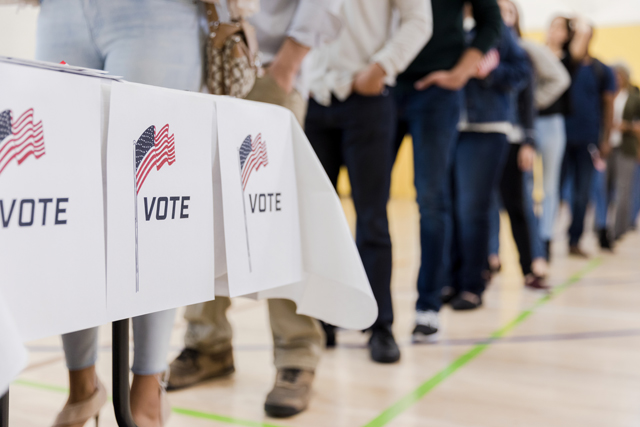In a study published in the journal Politics, Groups, and Identities, researchers focused on turnout changes across the 2012 and 2016 presidential elections in states that had recently passed strict photo voter ID laws: Alabama, Mississippi, Virginia and Wisconsin and compared those changes to other states with similar racial compositions that had not passed laws. They found the turnout gap between white counties and racially diverse counties grew more within states enacting new strict photo ID laws.
Such results lead to “an already significant racial skew in American democracy growing even more pronounced,” according the authors.
Contrary to previous studies on voter ID laws, the researchers used actual voter turnout data, rather than surveys gauging attitudes towards voting.
“By using official turnout data, we eliminate concerns over inflated or biased turnout patterns from self-reported surveys,” said co-author Zoltan Hajnal, a professor of political science at the UC San Diego School of Global Policy and Strategy. “This analysis provides more precise evidence that strict voter ID laws appear to discriminate.”
The researchers define strict voter identification law as any electoral law that requires voters to present identification before their ballot will be officially counted. Currently, 36 states have voter ID laws that, at a minimum, request identification and 11 of these states have strict voter ID, requiring ID (all of which have been passed since 2000). Since the study was completed, four additional states—Kentucky, North Carolina, Arkansas and North Dakota—have passed strict voter ID laws. Kentucky’s legislation was recently passed in April.
In swing states, a decline among non-white voters can have major electoral impacts
To determine if the implementation of strict photo ID laws discriminate, the authors looked to see if turnout in racially diverse counties declined relative to turnout in predominantly white counties more in states enacting strict voter IDs, vs states not enacting such laws.
To gauge this, the researchers used data from official county-level aggregate vote totals for all 3,142 counties in the U.S. They added census data on the racial and ethnic breakdown of the voting age population by county.
The findings revealed that when these laws are enacted, turnout in racially diverse counties declines more than in less diverse areas and more sharply than it does in other states.
“As the share of counties’ non-whites increases, so does the negative impact of strict ID laws,”
Hajnal and co-authors write. “For example, voter turnout in counties with a 75 percent non-white population declines 1.5 points more in states that just adopted strict ID laws than in states that didn’t implement a strict law.”
The authors added, “Given that the margin of victory in Wisconsin in the 2016 Presidential election was only 0.77 percentage points, this is a meaningful effect.”
Implications for the courts, which have served as the primary battle ground over these laws
Proponents of voter ID laws argue they are necessary to reduce voter fraud and instill greater legitimacy in the democratic process. Critics cite that racial and ethnic minorities are less likely than whites to have ready access to valid identification.
The authors point out that no two voter ID laws are identical, and laws in different states may be targeting different groups. For example, North Dakota’s strict law requires an ID with a residential street address, which may disproportionately target and impact Native Americans who live on reservations without an official street address.
The researchers noted that in many ways, the courts have served as the primary battle ground over these laws. Almost every strict ID law has been challenged in the courts.
In past proceedings, the courts’ rulings have appeared to rest more than anything else on the balance between the burden that these laws pose on racial and ethnic minorities and the state’s interest in the integrity of the electoral process. And that balance often seems to rest on the weight of the empirical evidence about the burden these laws pose to minorities.
“If courts are indeed trying to gauge the burden these laws impose on minorities and others, then this new data should help the courts with their deliberations,” the authors write.
In conclusion, they note “this research is an effort to expose inequalities and discrimination in the political system that will hopefully lead to awareness of those inequalities and even more so, to changes in the laws that could reduce them.”
Original post https://alertarticles.info




